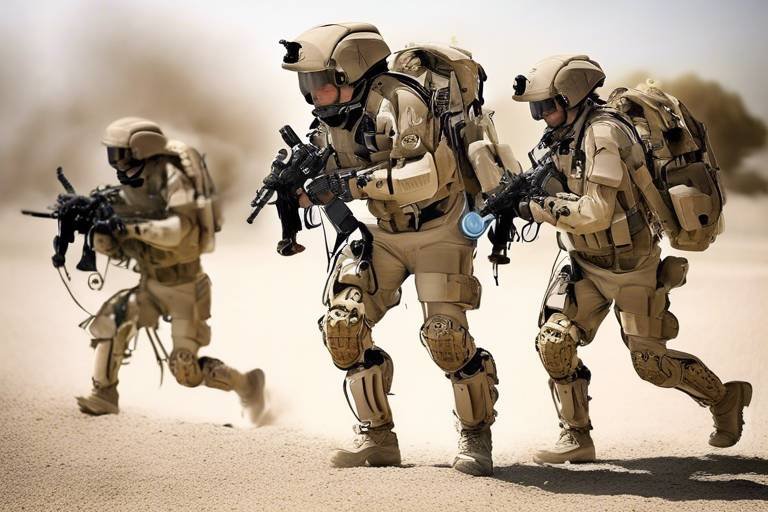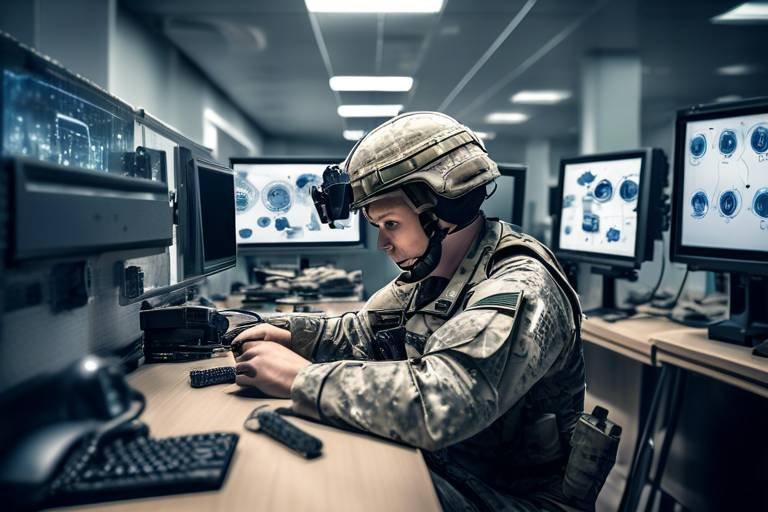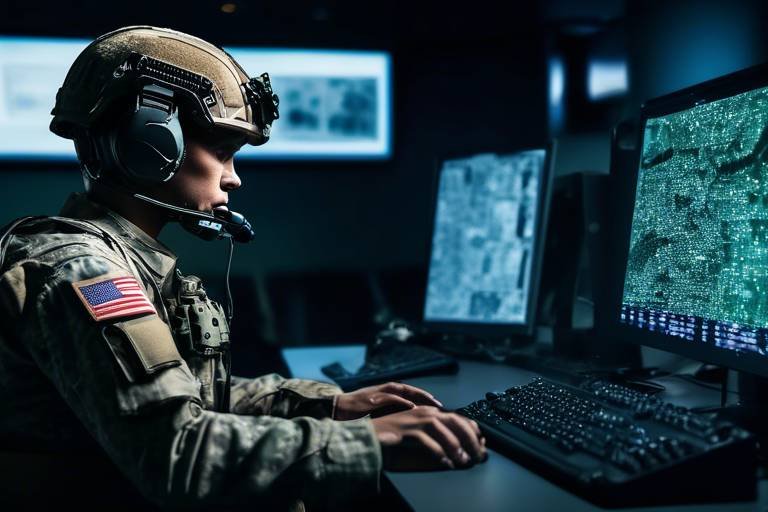The Impact of AI on Military Decision-Making Processes
In today's rapidly evolving world, the integration of artificial intelligence (AI) into military decision-making processes is nothing short of revolutionary. Imagine a battlefield where commanders can make lightning-fast decisions based on a wealth of data analyzed in real-time. This is not science fiction; it's the reality of modern warfare. AI is transforming how military operations are conducted, enhancing efficiency, and reshaping strategies. With AI at the forefront, military leaders are equipped to tackle complex challenges with unprecedented agility and precision.
AI technologies are not just tools; they are game-changers. They provide military personnel with enhanced situational awareness, allowing them to respond to threats more effectively. By harnessing the power of machine learning and data analytics, military organizations can sift through vast amounts of information quickly, identifying patterns and insights that may have otherwise gone unnoticed. This capability is crucial in high-stakes environments where every second counts and the margin for error is razor-thin.
Furthermore, the implications of AI extend beyond mere operational efficiency. They encompass strategic planning and resource allocation, fundamentally altering how military forces prepare for and engage in conflict. With AI, military leaders can simulate various scenarios, analyze potential outcomes, and devise strategies that are not only effective but also adaptable to changing circumstances. This level of foresight is invaluable in ensuring that military operations remain proactive rather than reactive.
However, as we embrace the benefits of AI in military settings, we must also grapple with the ethical considerations that arise. Questions about accountability and transparency loom large. When AI systems make decisions, who is responsible for the outcomes? This is particularly pressing in situations involving lethal force and civilian safety. Establishing a framework for accountability is essential to ensure that AI technologies are used responsibly and ethically.
As we look to the future, it's clear that the military must stay ahead of emerging trends in AI technologies. This involves not only adopting new tools but also fostering a culture of innovation and adaptability within military organizations. The integration of AI into military decision-making processes is just the beginning. As technology continues to evolve, so too must our strategies and approaches to warfare, ensuring that we remain at the cutting edge of defense innovation.
- How is AI currently used in military operations? AI is utilized for data analysis, real-time intelligence gathering, and decision support systems, enhancing situational awareness and operational efficiency.
- What are the ethical concerns surrounding AI in the military? Key concerns include accountability for AI decisions, transparency in algorithms, and the implications of autonomous weaponry.
- How does AI improve decision-making speed in the military? AI processes vast amounts of data quickly, allowing military leaders to make informed decisions based on real-time intelligence.
- What future trends can we expect in military AI technologies? Emerging trends include advancements in predictive analytics, enhanced surveillance systems, and increased integration of AI in strategic planning.

AI Integration in Military Operations
The incorporation of AI technologies into military operations is not just a trend; it’s a profound transformation that is reshaping how armed forces operate on the battlefield. Imagine a scenario where commanders have access to real-time data and insights that allow them to make split-second decisions with unparalleled accuracy. This is not science fiction; it’s the reality of modern warfare, where AI plays a pivotal role in enhancing operational efficiency and effectiveness.
One of the most significant advantages of AI integration is the ability to process and analyze vast amounts of data at lightning speed. Traditional military operations often relied on human intuition and experience, which, while valuable, can be limited by cognitive biases and the sheer volume of information available. With AI, military leaders can leverage advanced algorithms to sift through data from various sources, including satellite imagery, social media, and intelligence reports, to create a comprehensive picture of the battlefield.
Furthermore, the integration of AI allows for improved situational awareness. Commanders can monitor battlefield conditions in real-time, adapting their strategies based on the latest intelligence. This capability is crucial in fast-paced environments where every second counts. For instance, AI systems can analyze patterns in enemy movements, predict potential attacks, and suggest tactical adjustments, ensuring that military personnel are always one step ahead.
To illustrate the impact of AI integration in military operations, consider the following key areas where AI is making a difference:
- Enhanced Communication: AI systems can facilitate seamless communication among units, ensuring that all personnel are on the same page and can respond quickly to changing situations.
- Resource Allocation: AI can optimize the distribution of resources and personnel, ensuring that troops are deployed where they are needed most, thus maximizing operational efficiency.
- Training and Simulation: AI-driven simulations provide soldiers with realistic training scenarios, allowing them to practice responses to various situations without the risks associated with live training exercises.
In summary, the integration of AI into military operations is revolutionizing traditional practices, leading to faster decision-making, enhanced situational awareness, and improved resource management. As we continue to explore the capabilities of AI, the military must remain vigilant, ensuring that these technologies are used ethically and effectively to protect and serve. The future of warfare is here, and it is powered by artificial intelligence.
- What are the primary benefits of AI in military operations? AI enhances decision-making speed, improves situational awareness, and optimizes resource allocation.
- Are there any risks associated with AI in the military? Yes, there are ethical concerns regarding accountability and the potential for autonomous weaponry.
- How does AI improve training for military personnel? AI-driven simulations provide realistic training scenarios that help soldiers prepare for various situations without real-world risks.

Enhanced Data Analysis Capabilities
The advent of artificial intelligence has ushered in a new era of data analysis capabilities within military operations. Imagine a battlefield where decisions are made not just on instinct or experience, but on the analysis of vast amounts of data processed in real time. This is not a scene from a sci-fi movie; it’s the reality we are stepping into today. AI systems are capable of processing data at lightning speed, allowing military leaders to make informed decisions based on real-time intelligence and predictive analytics. With AI, the fog of war is becoming clearer, enabling commanders to visualize the battlefield like never before.
One of the most significant advantages of AI in military contexts is its ability to gather and analyze data continuously. This is crucial for maintaining situational awareness. AI technologies facilitate the collection of data from various sources, including satellite imagery, sensor networks, and social media feeds. By synthesizing this information, military personnel can receive timely updates that enhance their understanding of the battlefield dynamics. For instance, AI can analyze patterns in troop movements or predict enemy strategies based on historical data, which can be pivotal in shaping military tactics.
AI’s role in real-time intelligence gathering cannot be overstated. Traditional methods of data collection often result in delays that can be detrimental in high-stakes environments. However, with AI algorithms constantly monitoring various data streams, military leaders can access real-time updates that inform their decisions. This capability not only enhances operational effectiveness but also reduces the response time to emerging threats. Just think about it: in a world where every second counts, having the ability to predict an enemy’s move before it happens can be the difference between victory and defeat.
Another exciting development is the use of automated surveillance systems. Imagine drones equipped with AI that can autonomously patrol a designated area, identifying potential threats while minimizing human risk. These AI-powered drones can analyze video feeds, detect anomalies, and even recognize specific targets without direct human intervention. This not only increases operational efficiency but also ensures that human lives are not unnecessarily put at risk during reconnaissance missions. The ability of these systems to operate in hostile environments opens up new avenues for intelligence gathering.
Furthermore, AI’s predictive analytics capabilities allow military leaders to assess potential threats before they materialize. By analyzing historical data and identifying patterns, AI can forecast future events, enabling proactive measures. For instance, if AI detects an unusual buildup of enemy resources in a specific area, it can alert commanders to prepare for a possible attack. This level of foresight is invaluable, as it allows for strategic resource allocation and planning. In essence, AI acts as a crystal ball, providing insights that were previously unimaginable.
In summary, the integration of AI into military data analysis is transforming how decisions are made on the battlefield. With enhanced data analysis capabilities, military leaders can operate with greater precision and confidence, ensuring that they are always one step ahead of their adversaries. As we continue to embrace these technologies, the future of military operations looks not just efficient, but also profoundly strategic.
- How does AI improve military decision-making?
AI enhances decision-making by processing vast amounts of data quickly, providing real-time intelligence, and enabling predictive analytics for threat assessment. - What are automated surveillance systems?
Automated surveillance systems are AI-powered drones and technologies that monitor areas autonomously, gathering intelligence without risking human lives. - Can AI predict enemy movements?
Yes, AI can analyze historical data and patterns to forecast potential enemy actions, allowing military leaders to prepare accordingly.

Real-Time Intelligence Gathering
In the fast-paced world of modern warfare, has become a game changer for military operations. Imagine a battlefield where commanders can access critical information at the speed of light, enabling them to make decisions that could mean the difference between victory and defeat. This capability is made possible through the integration of artificial intelligence (AI) technologies, which continuously monitor and analyze vast amounts of data from various sources.
AI systems are designed to process information from satellites, drones, and even ground sensors. These systems can identify patterns and anomalies that human analysts might miss, providing a comprehensive picture of the battlefield in real-time. For instance, an AI algorithm can sift through hours of video footage from surveillance drones, pinpointing suspicious movements or gathering intelligence on enemy troop positions. This kind of rapid analysis allows military leaders to respond to threats almost instantaneously.
Furthermore, the use of AI in intelligence gathering helps to enhance the accuracy of information. Traditional methods often involve delays in data collection and analysis, which can lead to outdated or incorrect intelligence. In contrast, AI systems can provide timely updates and alerts, ensuring that commanders have access to the most current information. This capability is crucial, especially in dynamic combat environments where conditions can change within minutes.
To illustrate the impact of AI on real-time intelligence gathering, consider the following table that outlines some of the key technologies involved:
| Technology | Description | Benefits |
|---|---|---|
| Drones | Unmanned aerial vehicles equipped with cameras and sensors. | Provide aerial surveillance without risking human lives. |
| Ground Sensors | Devices that detect movement and environmental changes. | Offer real-time data on enemy movements and terrain conditions. |
| Data Analytics | AI algorithms that process and analyze large datasets. | Enhance decision-making by identifying trends and predicting outcomes. |
Moreover, AI technologies can facilitate collaboration between different branches of the military. By integrating data from various sources, such as air, land, and sea operations, commanders can have a unified view of the battlefield. This holistic approach not only improves situational awareness but also fosters better coordination among units, ensuring that everyone is on the same page.
However, while the benefits of real-time intelligence gathering through AI are substantial, there are also challenges that must be addressed. Issues such as data privacy, cybersecurity, and the potential for misinformation can complicate the landscape. Military leaders must ensure that the data being analyzed is accurate and secure, as any breach could lead to catastrophic consequences.
In conclusion, the integration of AI in real-time intelligence gathering is revolutionizing military operations. By providing timely, accurate, and comprehensive data, AI technologies empower military leaders to make informed decisions quickly. As these technologies continue to evolve, the potential for enhanced operational effectiveness in the field becomes even more promising.
- How does AI improve real-time intelligence gathering?
AI enhances the speed and accuracy of data analysis, allowing military leaders to receive timely updates and make informed decisions. - What technologies are used in AI-driven intelligence gathering?
Drones, ground sensors, and advanced data analytics are some of the key technologies that facilitate real-time intelligence gathering. - What challenges do military leaders face with AI in intelligence?
Data privacy, cybersecurity, and the risk of misinformation are significant challenges that must be managed to ensure effective AI deployment.
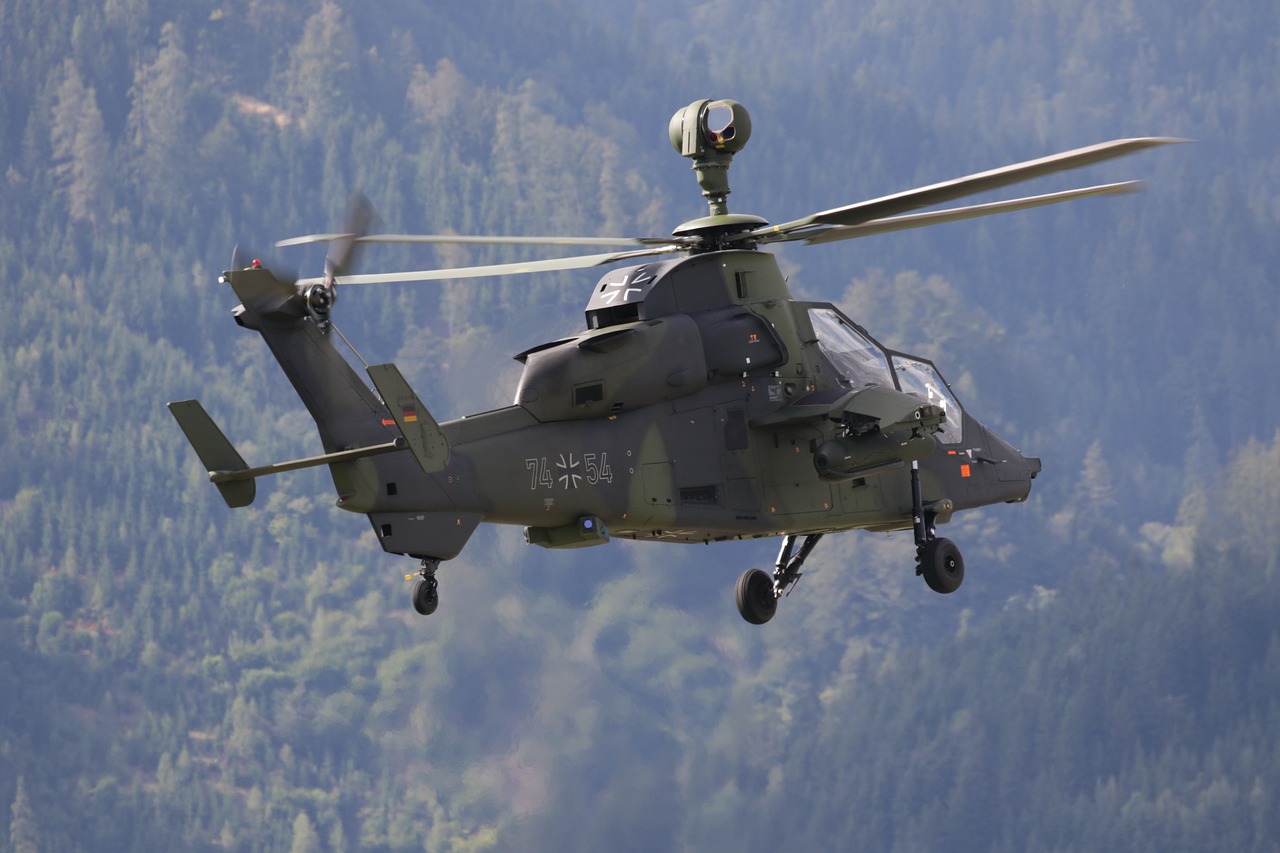
Automated Surveillance Systems
In the realm of modern warfare, have emerged as game-changers, fundamentally altering how military operations are conducted. These systems leverage the power of artificial intelligence to enhance reconnaissance efforts, offering real-time insights and comprehensive situational awareness. Imagine a watchful eye that never blinks, tirelessly scanning the battlefield while human operators can focus on strategic decision-making. This is the promise of AI-powered surveillance.
One of the standout features of these automated systems is their ability to process and analyze vast amounts of data from various sources, including satellite imagery, video feeds from drones, and ground sensors. This capability allows military leaders to gain a clearer understanding of the battlefield dynamics without putting personnel in harm's way. For instance, a drone equipped with AI can autonomously patrol an area, detect unusual activities, and report back to command centers with actionable intelligence. This not only enhances safety but also significantly increases the speed at which information is gathered and processed.
Moreover, automated surveillance systems can operate in challenging environments where human presence might be risky or impossible. Whether it's a dense jungle or a hostile urban setting, these systems can navigate and gather intelligence, mitigating the risk of casualties. The integration of advanced technologies such as computer vision and machine learning allows these systems to recognize patterns and anomalies, making them incredibly effective in identifying potential threats.
To illustrate the capabilities of automated surveillance systems, consider the following table that outlines their key features and benefits:
| Feature | Benefit |
|---|---|
| Real-Time Data Processing | Immediate insights for timely decision-making. |
| Autonomous Operation | Reduces risk to human personnel in dangerous areas. |
| Pattern Recognition | Identifies unusual activities or threats quickly. |
| Multi-Source Integration | Combines data from various platforms for a holistic view. |
As we look to the future, the role of automated surveillance systems in military operations is set to expand even further. With continuous advancements in AI, these systems will become more sophisticated, capable of making autonomous decisions based on the data they collect. This evolution raises important questions about human oversight and the ethical implications of relying on machines for critical military tasks. Nevertheless, the advantages they offer in terms of efficiency and safety are undeniable, making them a crucial component of modern military strategy.
- What are automated surveillance systems?
Automated surveillance systems are AI-powered technologies that monitor and analyze battlefield conditions, providing real-time intelligence without risking human lives. - How do these systems enhance military operations?
They enhance operations by offering quick data processing, autonomous operation in risky environments, and the ability to recognize patterns for threat detection. - What ethical concerns are associated with automated surveillance?
Key concerns include accountability for decisions made by AI, the potential for misuse, and the need for human oversight in critical situations.
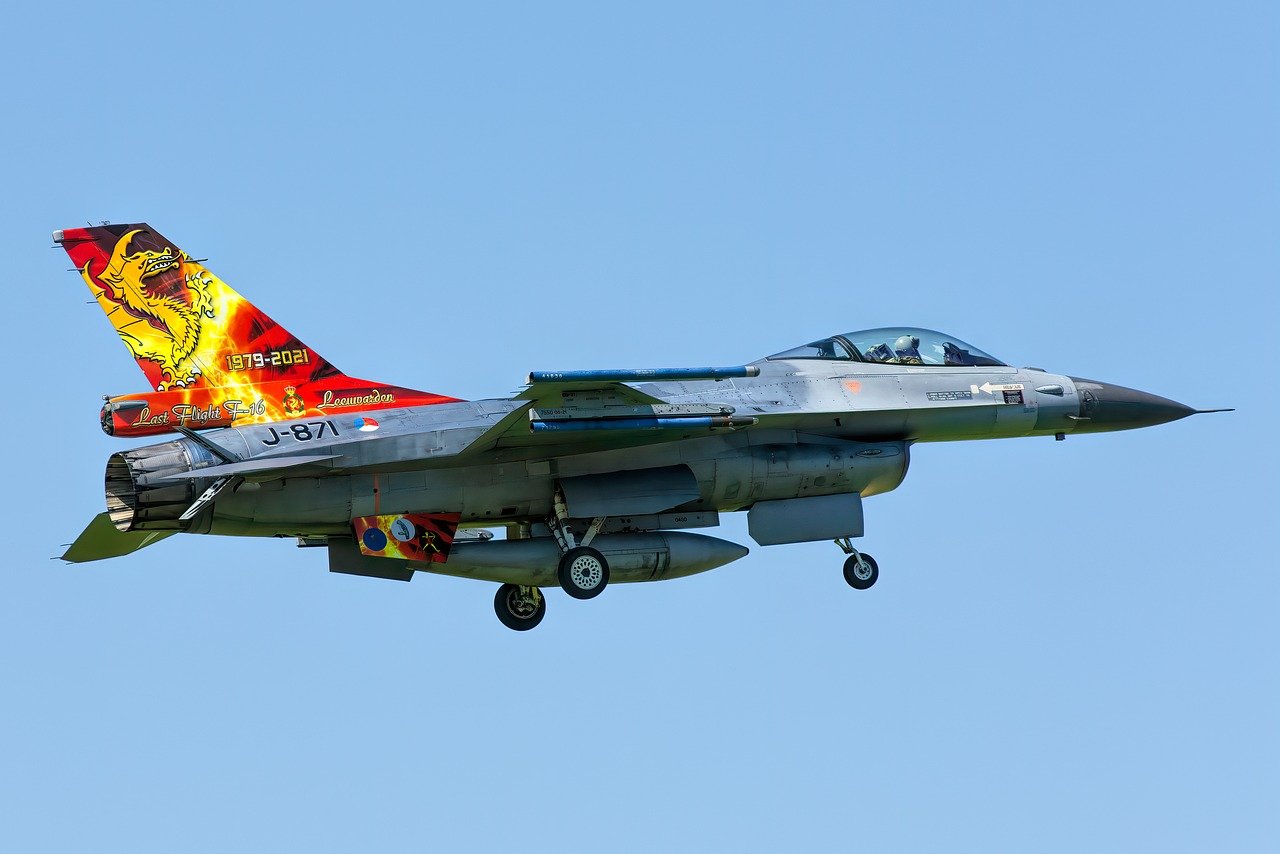
Predictive Analytics for Threat Assessment
In the rapidly evolving landscape of modern warfare, predictive analytics has emerged as a game-changing tool for military strategists. By leveraging vast amounts of historical data and employing sophisticated algorithms, military leaders can anticipate potential threats before they materialize. Imagine having a crystal ball that not only reveals the enemy's next move but also provides insights into the best course of action to counteract it. This is the power of predictive analytics in threat assessment.
At its core, predictive analytics involves analyzing patterns and trends from previous conflicts, operational data, and even social media activity to forecast possible future events. For instance, by examining data from past military engagements, AI systems can identify indicators of escalating tensions, such as troop movements or logistic preparations, which may suggest an impending attack. This proactive approach allows military personnel to allocate resources more effectively, ensuring that they are prepared for a range of possible scenarios.
One of the most significant advantages of predictive analytics is its ability to enhance situational awareness. Military analysts can utilize AI-driven models to create simulations of various conflict scenarios, evaluating the potential outcomes based on different variables. This not only aids in strategic planning but also helps in making informed decisions on the ground. For example, if an AI system predicts a high likelihood of an ambush based on troop movements observed in the area, commanders can adjust their strategies accordingly, thereby minimizing risks to personnel and equipment.
Furthermore, predictive analytics can be instrumental in resource allocation. By understanding where threats are likely to arise, military leaders can position their assets more strategically. This could involve deploying additional troops to a hotspot or ensuring that supply lines are secure in anticipation of a potential conflict. The ability to predict where and when threats may occur can significantly enhance operational efficiency and effectiveness.
However, the implementation of predictive analytics is not without its challenges. Data quality is paramount; inaccurate or incomplete data can lead to misguided predictions, potentially jeopardizing missions and lives. Moreover, there are ethical considerations surrounding privacy and surveillance, particularly when data is sourced from civilian communications or social media. Striking a balance between effective threat assessment and respecting individual privacy rights is an ongoing debate within military circles.
As we look to the future, the integration of machine learning and big data analytics into military operations will continue to evolve. The potential for AI to refine predictive models will only increase, allowing for even greater accuracy in threat assessments. In essence, predictive analytics is not just a tool—it's a strategic advantage that can mean the difference between victory and defeat on the battlefield.
- What is predictive analytics in military operations?
Predictive analytics involves using historical data and algorithms to forecast potential threats and outcomes in military contexts. - How does predictive analytics enhance situational awareness?
By analyzing data trends and patterns, predictive analytics provides military leaders with insights into possible future events, enabling better decision-making. - What are the ethical concerns surrounding predictive analytics?
Concerns include data privacy, accuracy of information, and the potential for misuse of surveillance data. - Can predictive analytics replace human decision-making in the military?
While predictive analytics can provide valuable insights, human judgment remains essential in interpreting data and making final decisions.

Decision Support Systems
The integration of artificial intelligence into military decision-making processes has introduced a revolutionary tool known as Decision Support Systems (DSS). These systems are designed to assist military leaders in making informed choices by simulating various scenarios and outcomes. Imagine being able to run through countless strategic options in a matter of seconds—this is the power of AI at work! With the complexities of modern warfare, where every second counts, DSS can significantly enhance operational effectiveness.
At their core, Decision Support Systems utilize advanced algorithms and data analytics to provide military commanders with actionable insights. These systems analyze vast datasets, including intelligence reports, weather conditions, troop movements, and historical data, to forecast potential outcomes of different strategies. This capability allows military leaders to visualize the implications of their decisions before executing them, ultimately reducing risks and improving mission success rates.
One of the most significant advantages of DSS is their ability to simulate “what-if” scenarios. For instance, a military leader can input various parameters—such as troop strength, terrain type, and enemy capabilities—and the system will generate potential outcomes based on those variables. This not only aids in strategic planning but also prepares commanders for unexpected developments on the battlefield. With a clear view of possible scenarios, leaders can make decisions that are not only informed but also adaptable to changing circumstances.
Furthermore, the implementation of DSS can streamline the decision-making process. In traditional military operations, gathering intelligence and analyzing data can be time-consuming. However, with AI-driven systems, real-time data is processed and presented in a user-friendly format, allowing commanders to focus on strategy rather than getting bogged down in data. This efficiency is crucial, especially in high-pressure situations where quick decisions can mean the difference between success and failure.
To illustrate the impact of Decision Support Systems, consider the following table that highlights key features and benefits:
| Feature | Benefit |
|---|---|
| Real-time Data Processing | Enables immediate access to critical information for timely decision-making. |
| Scenario Simulation | Allows leaders to visualize outcomes and prepare for various battlefield conditions. |
| Risk Assessment | Helps in identifying potential risks and planning mitigative strategies. |
| User-Friendly Interface | Facilitates ease of use, allowing commanders to focus on strategic decisions. |
As we look to the future, the role of Decision Support Systems in military operations is expected to grow even more critical. With advancements in machine learning and data analytics, these systems will become increasingly sophisticated, enabling military leaders to navigate the complexities of modern warfare with a level of precision previously thought impossible. The question remains: how will military organizations adapt to fully leverage these powerful tools while addressing the ethical considerations that accompany their use?
- What are Decision Support Systems?
Decision Support Systems are AI-driven tools that assist military leaders in making informed decisions by simulating various scenarios and forecasting potential outcomes. - How do DSS improve military operations?
DSS enhance military operations by providing real-time data analysis, scenario simulations, and risk assessments, allowing commanders to make quicker and more informed decisions. - What types of data do DSS analyze?
DSS analyze a wide range of data, including intelligence reports, historical data, weather conditions, and troop movements, to inform decision-making processes. - Are there ethical concerns associated with using DSS?
Yes, the use of Decision Support Systems raises ethical questions regarding accountability, transparency, and the potential consequences of automated decision-making.
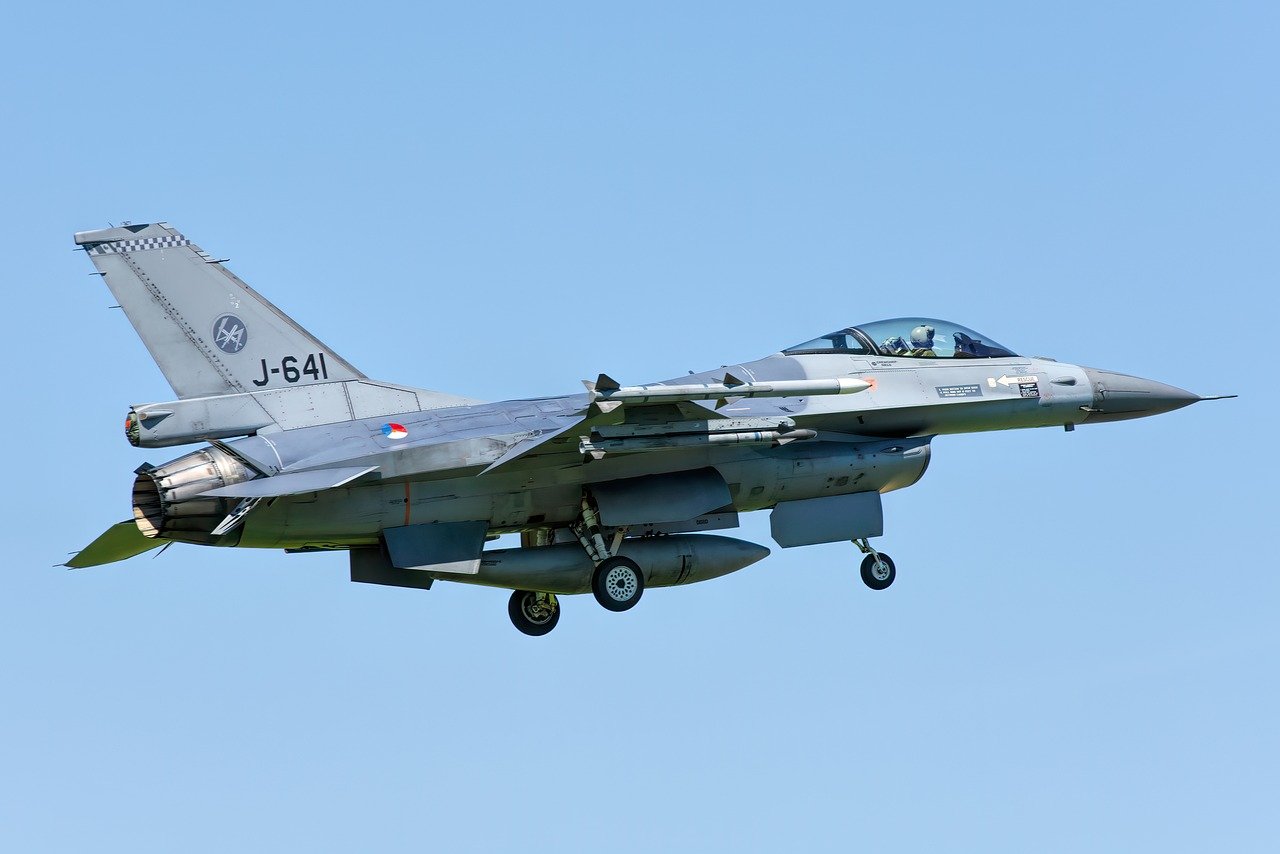
Ethical Considerations in AI Deployment
The integration of artificial intelligence (AI) into military operations is not just a technological advancement; it also brings forth a myriad of ethical considerations that cannot be overlooked. As we embrace AI's capabilities, we must grapple with questions surrounding accountability, transparency, and the potential implications of autonomous weapon systems. These issues are crucial, especially when the stakes involve human lives and international relations.
One of the most pressing concerns is accountability. When a military operation involves AI systems making decisions, who is responsible for the outcomes? For instance, if an AI system mistakenly identifies a civilian target and results in casualties, determining accountability becomes a complex issue. Is it the programmer who designed the algorithm, the military personnel who deployed it, or the AI itself? This ambiguity can lead to a dangerous precedent where responsibility is diluted, and victims may not receive justice.
Moreover, the transparency of AI systems plays a vital role in building trust among military personnel and the public. Understanding how these systems operate, what data they analyze, and the logic behind their decision-making processes is essential. If military personnel are unaware of how AI arrives at its conclusions, they may hesitate to rely on its recommendations, potentially compromising mission success. Transparency fosters trust, and without it, skepticism towards AI technologies can hinder their effectiveness in critical situations.
Another ethical dilemma arises with the development of autonomous weaponry. The idea of machines making life-and-death decisions raises profound moral questions. Can we ethically justify allowing AI to engage in combat or make decisions that could result in loss of life? The potential for malfunction or misjudgment in these systems could lead to catastrophic consequences. As such, the debate over whether to implement fully autonomous weapons systems is ongoing and contentious.
As we navigate these ethical waters, it’s crucial to establish guidelines and frameworks that govern the use of AI in military contexts. This includes setting up oversight committees, ensuring rigorous testing of AI systems, and fostering international dialogue on the implications of AI in warfare. By proactively addressing these ethical considerations, we can harness the power of AI while minimizing its risks.
- What are the main ethical concerns regarding AI in military operations?
The primary concerns include accountability for decisions made by AI, transparency in how AI systems operate, and the implications of autonomous weaponry. - How can accountability be ensured in AI deployments?
Establishing clear guidelines on responsibility, conducting thorough training for military personnel, and creating oversight committees can help ensure accountability. - Why is transparency important in military AI systems?
Transparency fosters trust among military personnel and the public, ensuring that users understand how AI systems make decisions, which can enhance operational effectiveness. - What steps are being taken to address ethical issues in military AI?
Many military organizations are developing ethical guidelines, engaging in international discussions, and implementing oversight mechanisms to address these concerns.

Accountability in AI Operations
The rise of artificial intelligence (AI) in military operations brings forth a plethora of challenges, particularly regarding accountability. As AI systems increasingly take on roles that were once reserved for human decision-makers, the question of who is responsible for the outcomes of those decisions becomes paramount. Imagine a scenario where an AI-controlled drone makes a split-second decision to engage a target. If that decision leads to unintended civilian casualties, who is held accountable? Is it the programmer who wrote the algorithm, the military personnel who deployed the system, or the AI itself?
These questions underscore the complexities of integrating AI into military frameworks. One of the fundamental principles of military ethics is the concept of accountability, which is essential for maintaining trust within the ranks and with the public. Military leaders must grapple with the implications of AI decision-making, ensuring that there are clear lines of responsibility. This situation becomes even more convoluted in the context of autonomous weapons systems, where AI operates without direct human oversight.
To tackle these challenges, the military must establish robust guidelines that delineate accountability in AI operations. Here are some key considerations that could help frame this discussion:
- Clear Protocols: Establishing clear protocols for AI deployment can help delineate responsibility. This includes defining the roles of human operators versus AI systems in decision-making processes.
- Transparency in Algorithms: Ensuring that AI algorithms are transparent and understandable is crucial. If military personnel can comprehend how decisions are made, it fosters a sense of accountability.
- Continuous Oversight: Implementing continuous oversight mechanisms can help ensure that AI systems are functioning as intended and that human operators remain in control.
Moreover, the military must consider the implications of AI accountability in relation to international law. As AI technologies evolve, so too must the legal frameworks that govern their use. This includes adapting existing laws to address the unique challenges posed by AI, such as the potential for unintended consequences and the need for accountability in a rapidly changing battlefield environment.
Ultimately, the integration of AI into military operations presents an opportunity to enhance efficiency and effectiveness. However, without a clear framework for accountability, the risks associated with these technologies could outweigh their benefits. It is essential for military leaders to prioritize accountability in AI operations, ensuring that ethical considerations remain at the forefront of technological advancements.
- What is accountability in AI operations?
Accountability in AI operations refers to the responsibility assigned to individuals or entities for decisions made by AI systems, particularly in military contexts. - Why is accountability important in military AI?
Accountability is crucial to maintain trust, ensure ethical decision-making, and comply with legal standards, especially when AI systems are involved in life-and-death situations. - How can military organizations ensure accountability in AI?
By establishing clear protocols, ensuring transparency in algorithms, and implementing continuous oversight, military organizations can foster accountability in AI operations.
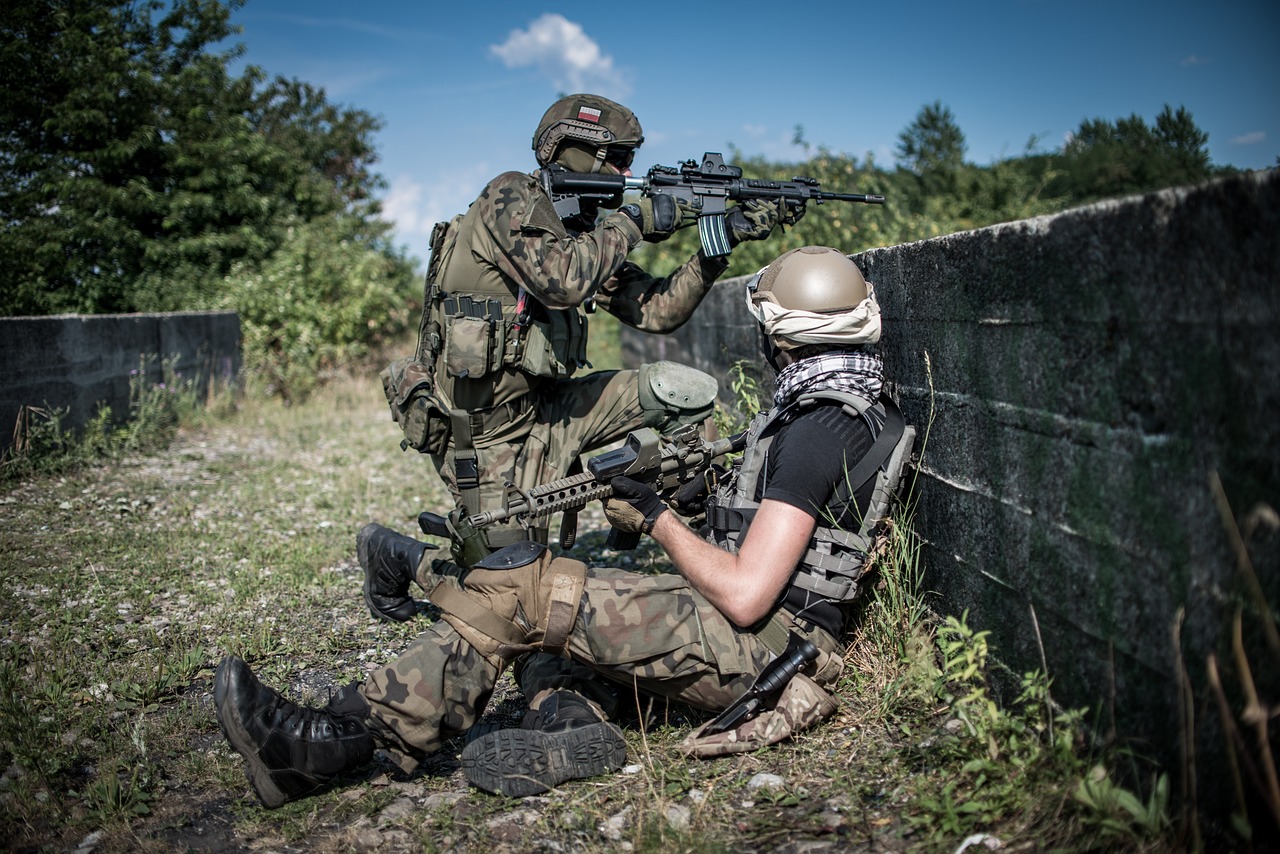
Transparency and Trust in AI Systems
In the realm of military operations, the integration of artificial intelligence (AI) brings forth a myriad of benefits, but it also raises pressing concerns regarding transparency and trust. When we talk about AI in a military context, we're not just discussing advanced algorithms and data processing; we're delving into systems that can influence life-and-death decisions. This makes it essential for military personnel and the public alike to understand how these systems function.
Transparency in AI systems is about shedding light on the algorithms and processes that drive decision-making. Without this clarity, there is a risk of skepticism and mistrust among military personnel who rely on these technologies. Imagine a soldier in the field, making critical decisions based on AI recommendations. If that soldier doesn't understand how the AI reached its conclusions, how can they trust its guidance? This situation can lead to hesitation and second-guessing, which could be detrimental in high-stakes environments.
To foster trust, military organizations must prioritize transparency by:
- Documenting AI Algorithms: Providing clear documentation on how AI models are designed, trained, and validated can help demystify the technology.
- Conducting Regular Audits: Implementing routine checks on AI systems ensures they operate as intended and remain free from biases that could skew decision-making.
- Engaging Stakeholders: Involving military personnel in the development and evaluation of AI systems can enhance their understanding and acceptance of the technology.
Moreover, establishing a feedback loop where users can report issues or concerns about AI recommendations is crucial. This not only aids in refining the AI systems but also empowers users, making them feel like active participants in the decision-making process rather than passive recipients of technology. Trust is built when users know they have a voice and that their experiences will shape future developments.
Ultimately, the goal is to create AI systems that are not just efficient but also ethical and trustworthy. As military operations become increasingly reliant on AI, the emphasis on transparency will be vital in ensuring that these technologies enhance rather than undermine the integrity of military decision-making.
- What is the role of transparency in AI systems? Transparency helps users understand how AI makes decisions, which is crucial for building trust.
- How can military organizations ensure AI systems are trustworthy? By documenting algorithms, conducting audits, and engaging users in the development process.
- Why is user feedback important in AI deployment? User feedback allows for continuous improvement of AI systems and fosters a sense of ownership among military personnel.
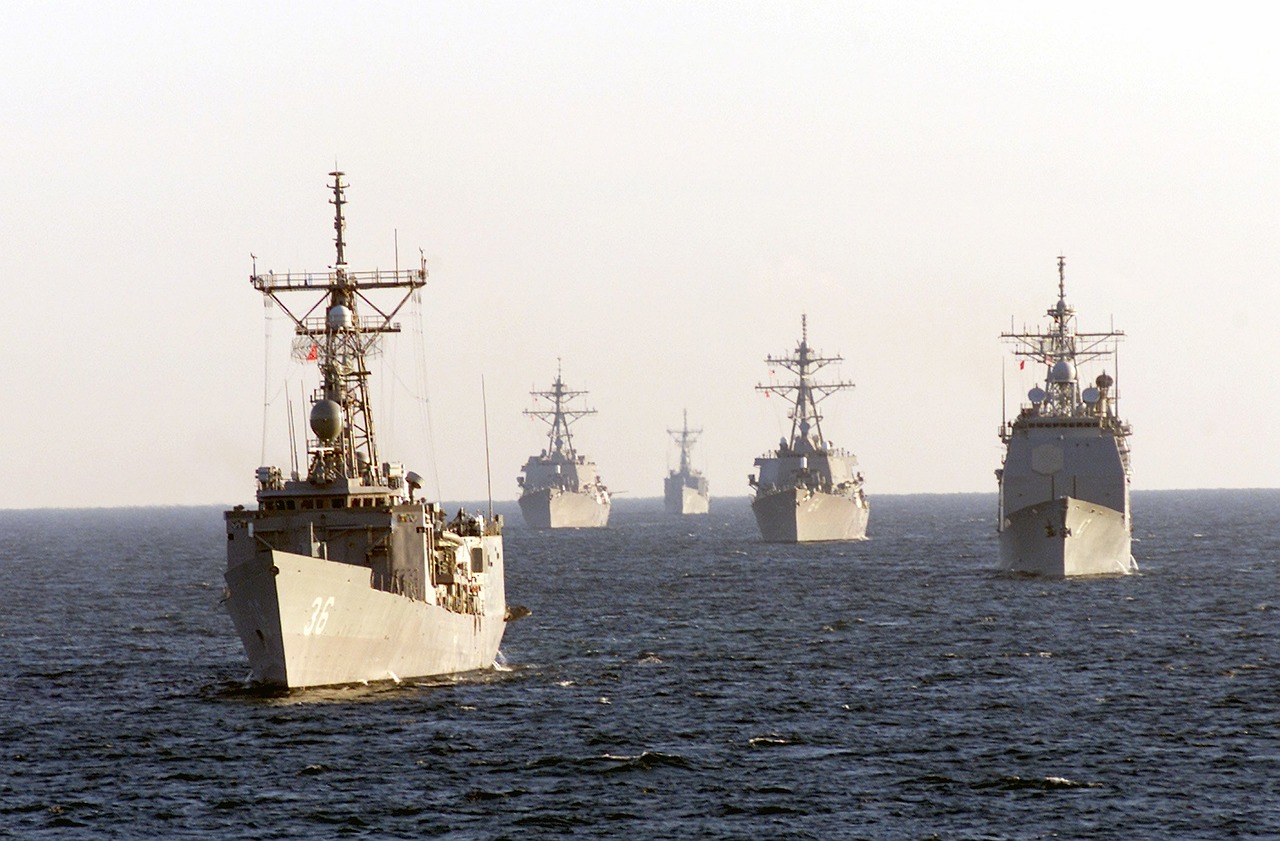
Future Trends in Military AI Technologies
The landscape of military operations is on the brink of a transformation, driven by the rapid advancement of artificial intelligence technologies. As we look to the future, several key trends are emerging that will shape how military forces operate, strategize, and respond to threats. These trends are not just about enhancing existing capabilities but also about redefining the very nature of warfare itself.
One of the most significant trends is the development of autonomous systems. These systems, which include drones and unmanned ground vehicles, are expected to take on more complex roles in combat scenarios. Imagine a battlefield where drones can independently assess threats and make real-time decisions without human intervention. This could significantly reduce the risk to human soldiers and improve mission success rates. However, this also raises questions about the ethics of autonomy in warfare, which we must address as these technologies become more prevalent.
Another exciting trend is the integration of machine learning algorithms into military training programs. By simulating various combat scenarios, AI can create a dynamic training environment that adapts to the learning pace and style of individual soldiers. This not only enhances the training experience but also prepares military personnel for unpredictable situations they may encounter in real-life operations. It’s like having a personal trainer who knows exactly what you need to improve and adjusts the workout accordingly!
Moreover, the use of AI in logistics is set to revolutionize supply chain management within the military. AI systems can predict supply needs, optimize routes for delivery, and even manage inventory levels in real-time. This means that troops will have the resources they need, exactly when they need them, reducing waste and improving efficiency. For instance, a predictive analytics model could analyze past operations to forecast the necessary supplies for an upcoming mission, ensuring that nothing is left to chance.
As AI technologies continue to evolve, we can also expect advancements in cyber defense. With the increasing reliance on digital systems, military forces must protect their networks from cyber threats. AI can play a crucial role in identifying vulnerabilities and responding to attacks faster than human operators could. Picture a scenario where AI systems monitor network activity, detect anomalies, and initiate defensive measures autonomously, safeguarding essential communication lines and operational integrity.
Lastly, the future of military AI will likely see a greater emphasis on collaboration between humans and machines. Rather than replacing human decision-makers, AI will augment their capabilities, providing insights and recommendations that enhance situational awareness. This partnership could lead to faster, more informed decisions on the battlefield, ultimately improving outcomes in complex and high-stakes environments.
In summary, the future of military AI technologies is bright, with innovations poised to redefine how military forces operate. While the potential benefits are immense, it is essential to navigate the accompanying ethical challenges carefully. As we embrace these advancements, we must ensure that they are implemented responsibly and transparently, maintaining trust and accountability in military operations.
- What is the role of AI in modern military operations? AI enhances decision-making, improves data analysis, and streamlines logistics in military operations.
- Are autonomous weapons ethical? The ethics of autonomous weapons are debated, focusing on accountability and the potential for unintended consequences.
- How does AI improve military training? AI creates adaptive training environments that simulate various combat scenarios, enhancing soldier preparedness.
- What are the cybersecurity implications of AI? AI can help identify and mitigate cyber threats, protecting military networks from attacks.
Frequently Asked Questions
- How is AI changing military decision-making?
AI is revolutionizing military decision-making by providing enhanced data analysis capabilities, allowing for quicker and more informed decisions. With AI, commanders can access real-time intelligence and predictive analytics, which significantly improves situational awareness on the battlefield.
- What are the benefits of AI integration in military operations?
The integration of AI in military operations leads to faster data processing, improved reconnaissance through automated surveillance systems, and better threat assessment via predictive analytics. This means military personnel can make timely decisions that can save lives and resources during operations.
- What ethical concerns arise from using AI in the military?
Using AI in military contexts raises ethical questions about accountability, especially regarding decisions that may result in civilian casualties. There are also concerns about transparency in AI systems, as understanding how these technologies operate is crucial for building trust among military personnel.
- Can AI systems operate autonomously in military scenarios?
While AI systems can assist in decision-making, the deployment of fully autonomous weaponry is a contentious issue. Ethical considerations necessitate human oversight to ensure accountability and prevent unintended consequences in combat situations.
- What future trends can we expect in military AI technologies?
As AI technology continues to evolve, we can expect advancements in machine learning, improved predictive analytics, and enhanced decision support systems. The military will need to adapt to these trends to maintain a strategic edge in defense operations.



